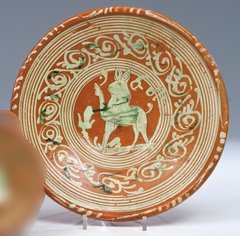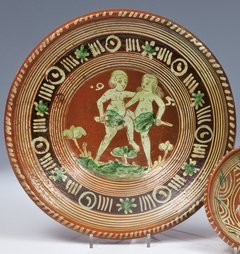Every spare hour I've had I've skipped out into our shed, flicked on the fairy lights and CD player and lost track of time pondering, snipping and shuffling ceramic. Pleasure is deepened when the rain hits the corrugated iron roof and the wind gusts outside.
And here are the first results.
I started off with the relief moulded surrounds of Staffordshire white salt glazed stoneware plates, first produced in block moulds in 1740. They were the first home made refined tableware which didn't chip (unlike delftware). Expensive but I assume cheaper than the imported Chinese porcelain and very fashionable in their day. Standards patterns were used to decorate the edges, 'barley' or 'basket' and the 'dot, diaper and basket' all of which are in the section below, the 'feather' design I've used elsewhere. By 1750 white salt glazed stoneware caused the demise of the delftware industry, but by 1760 it was itself superceded by creamware and pearlware.
 |
| Mudlarking Mosaic White Salt Glazed Stoneware from Staffordshire 1740 onwards |
 |
| Dot, Diaper and basket English Saltglazed Plate C 1760 (Spode Ceramics.com) |
 |
| Staffordshire Salt Glazed Soup Tureen C 1760 (live auctioneers) |
The age of this stuff is brought home when you realise the people eating off these plates wore wigs, corsets, lace caps and big satin dresses.
 |
| A British Family Served with Tea 1745 artist unknown (b-womeninamericanhistory) |
and that they were used in a London which was far smaller
 |
| John_Rocque's_Map_of_London 1746 (Wiki) |
In keeping with mosaic design I'm plagiarising, on the right I laid out a more textured section using the bottoms of bowls and plates, a mixture of white salt glazed stoneware, porcelain and creamware. My first veer away from the mosaic I'm following is the central section which is comprised of one of my favourites, debased scratched blue stoneware produced from 1765-95. Inky cobalt dissolves across the edges of the incised abstract leaves and flowers. Again very fashionable but it seems only for a short period. The bottom shard on the left has just a weenie bit of a medallion, a little secret tucked away in the corner of a rectangle.



























































